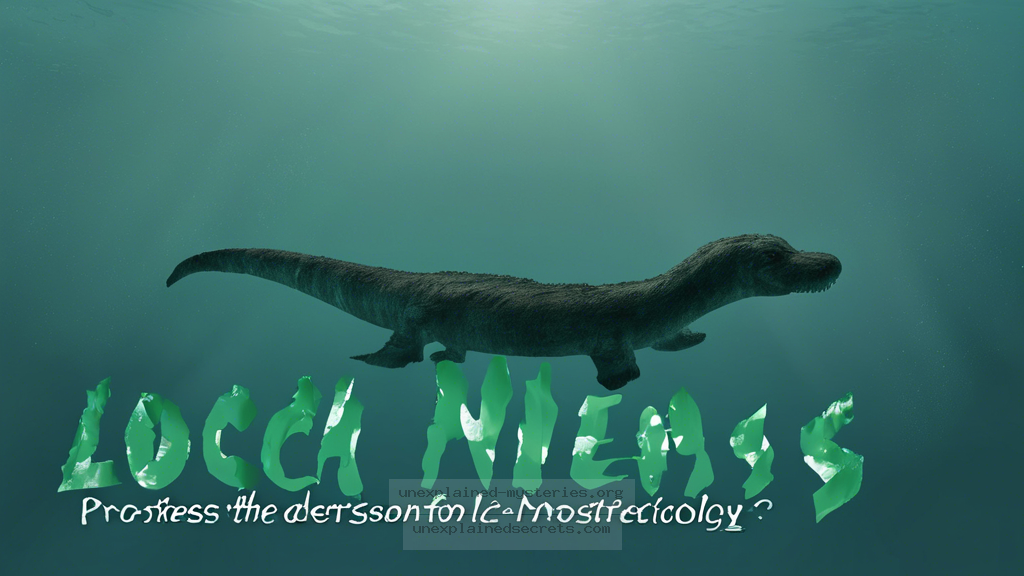What Secrets Lie Beneath the Surface of Loch Ness? Exploring Sonar Detections of the Loch Ness Monster
What Secrets Lie Beneath the Surface of Loch Ness? Exploring Sonar Detections of the Loch Ness Monster
The Loch Ness Monster, affectionately known as “Nessie,” has captivated the imaginations of millions for decades. What secrets might the depths of Loch Ness hold, especially when it comes to sonar detections that have sparked both intrigue and skepticism? Understanding these sonar findings can shed light on one of the most enduring mysteries in cryptozoology, challenging our perceptions of what might inhabit this iconic Scottish loch. In this post, we’ll delve into the historical context, the core concepts surrounding sonar technology, and how these detections impact the ongoing debate about the existence of Nessie.
Historical Context: The Legend of Nessie
The lore of the Loch Ness Monster dates back to ancient times, with the first recorded sighting occurring in 565 AD, when St. Columba reportedly encountered a “water beast” in the loch. However, the modern fascination began in the 1930s with the infamous “Surgeon’s Photo,” which purported to show a large creature swimming in the loch. This image ignited a media frenzy and brought Nessie into the spotlight, leading to numerous expeditions and studies aimed at uncovering the truth behind the legend.
Over the years, many expeditions have taken place, with researchers using various technologies to investigate the loch’s depths. One of the most significant advancements in these explorations has been the advent of sonar technology, which allows researchers to map underwater topography and detect objects below the surface.
Core Concepts: Understanding Sonar Technology
Sonar, which stands for Sound Navigation and Ranging, is a technology that utilizes sound waves to detect and locate objects underwater. There are two primary types of sonar used in Loch Ness investigations: active sonar and passive sonar. Active sonar sends out sound waves and listens for echoes, while passive sonar listens for sounds made by objects in the water.
Researchers often use sonar to create detailed maps of the loch’s bottom, revealing underwater structures and potential habitats for unknown creatures. When sonar detects an anomaly, it can be analyzed to determine whether it may be a biological entity, leading to further investigation.
Notable Sonar Detections: A Closer Look
One of the most remarkable sonar detections occurred during the 1987 “Operation Deepscan,” where a fleet of boats equipped with sonar technology scanned the loch. This extensive survey was remarkable in its scale, covering nearly the entire surface area of the loch. During the operation, researchers detected an unexplained object at a depth of approximately 200 meters, which was later dubbed “Nessie.” This finding reignited interest in the possibility of a large creature residing in Loch Ness.
Practical Implications: What Do Sonar Results Mean?
Sonar detections provide valuable insights into the underwater environment of Loch Ness. While some anomalies can be attributed to natural formations or man-made objects, others remain unexplained. The presence of large objects detected by sonar could indicate a significant biological presence, fueling theories about the Loch Ness Monster. However, skeptics argue that sonar detections can often be misinterpreted, leading to false conclusions about the existence of unidentified creatures.
For example, some researchers suggest that the sonar anomalies could be attributed to large schools of fish or even underwater vegetation that disrupts the sonar waves. Thus, while sonar provides compelling evidence, it must be interpreted cautiously.
Alternative Perspectives: The Skeptic’s View
Not everyone is convinced by the sonar evidence supporting the existence of the Loch Ness Monster. Skeptics argue that many sonar detections have plausible explanations that do not involve a large, unknown creature. For instance, studies have shown that the loch’s unique geological features can produce sonar echoes that may mimic biological activity.
Moreover, the frequency of sightings and sonar detections has diminished over the years, leading some to question whether Nessie ever existed or if it was merely a figment of local folklore and media sensationalism. The debate between believers and skeptics continues, with both sides presenting compelling arguments.
Common Misconceptions: Clarifying the Myths
One of the most widespread misconceptions about sonar detections is that any unexplained anomaly must be evidence of Nessie. In reality, sonar technology can detect a wide range of objects, and the interpretations can vary significantly. For instance, smaller fish, submerged logs, or even bubbles can create sonar signatures similar to those of large creatures. It is essential to approach sonar data with a critical mindset and consider all possible explanations before concluding that a detection is indicative of the Loch Ness Monster.
Best Practices for Investigating Sonar Detections
For researchers interested in investigating sonar detections in Loch Ness or similar bodies of water, several best practices can enhance the validity and reliability of their findings:
- Utilize multiple sonar systems to cross-verify results and obtain a comprehensive understanding of the underwater environment.
- Conduct repeat surveys to track changes over time and to confirm any anomalies detected in previous studies.
- Incorporate visual confirmation techniques, such as underwater cameras, to supplement sonar data and provide clearer evidence.
- Engage with experts in marine biology and hydrology to interpret findings and understand the ecological context of the loch.
Future Developments: Ongoing Research and Technological Advances
As technology advances, the future of sonar research in Loch Ness looks promising. Newer systems, such as high-resolution multi-beam sonar, allow for more detailed mapping of underwater structures and creatures. Additionally, the use of autonomous underwater vehicles (AUVs) equipped with sonar technology can cover larger areas with precision, increasing the chances of detecting anomalies.
In recent years, citizen science initiatives have also gained popularity, with enthusiasts and researchers collaborating to gather data and share findings. This collective effort may lead to new discoveries and a deeper understanding of Loch Ness and its mysteries.
Conclusion: The Enigma of Loch Ness Continues
The sonar detections in Loch Ness remain one of the most intriguing aspects of the ongoing mystery surrounding the Loch Ness Monster. While sonar technology has provided valuable insights and has detected unexplained anomalies, the interpretations of these findings are still subject to debate. The legend of Nessie continues to inspire curiosity and exploration, reminding us that some mysteries may never be fully solved.
As we look to the future, continued research and technological advancements will play a crucial role in further understanding the depths of Loch Ness. Whether you are a skeptic or a believer, the journey to uncover the truth about Nessie is one that invites exploration, debate, and, above all, wonder. 🌊💫
Other Articles
Recent Posts
- What Happened to Flight MH370? The Conspiracy Theories That Still Haunt Us
- What Secrets Lurk Within the Walls of the Infamous Trans-Allegheny Lunatic Asylum?
- What Evidence Supports the Existence of Bigfoot in the Pacific Northwest?
- What Happened to the Indus Valley Civilization? Unraveling the Mysteries of Ancient Urban Life
- Can Telepathy Be Scientifically Proven Through Laboratory Evidence?







